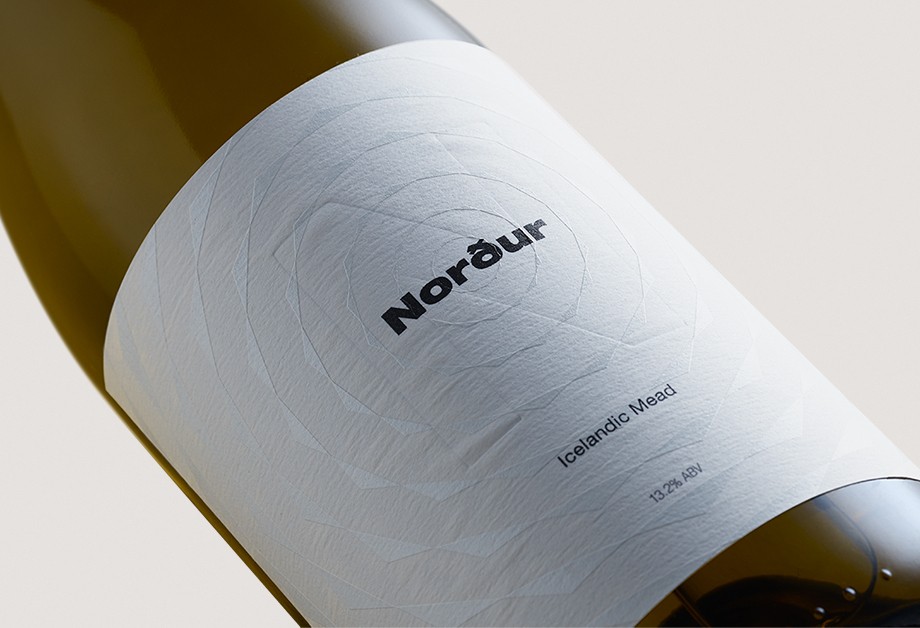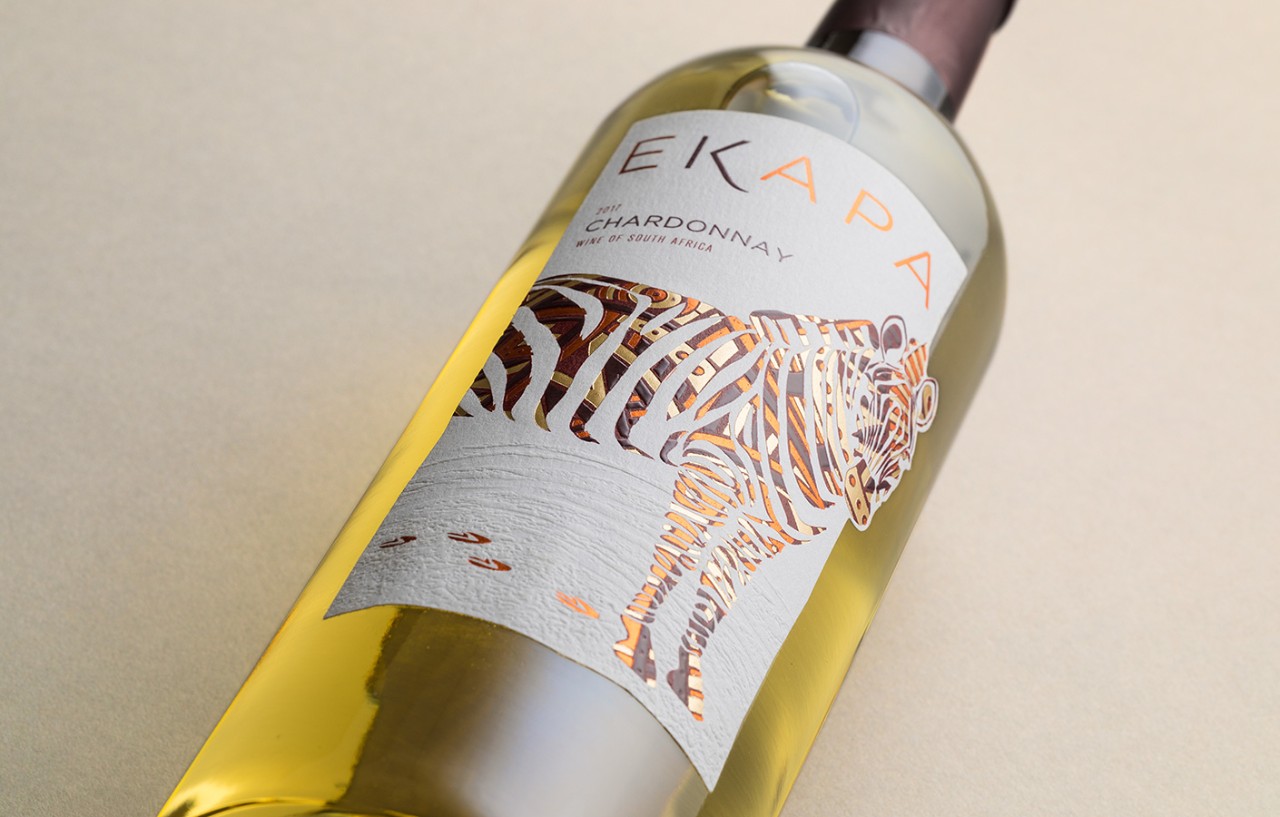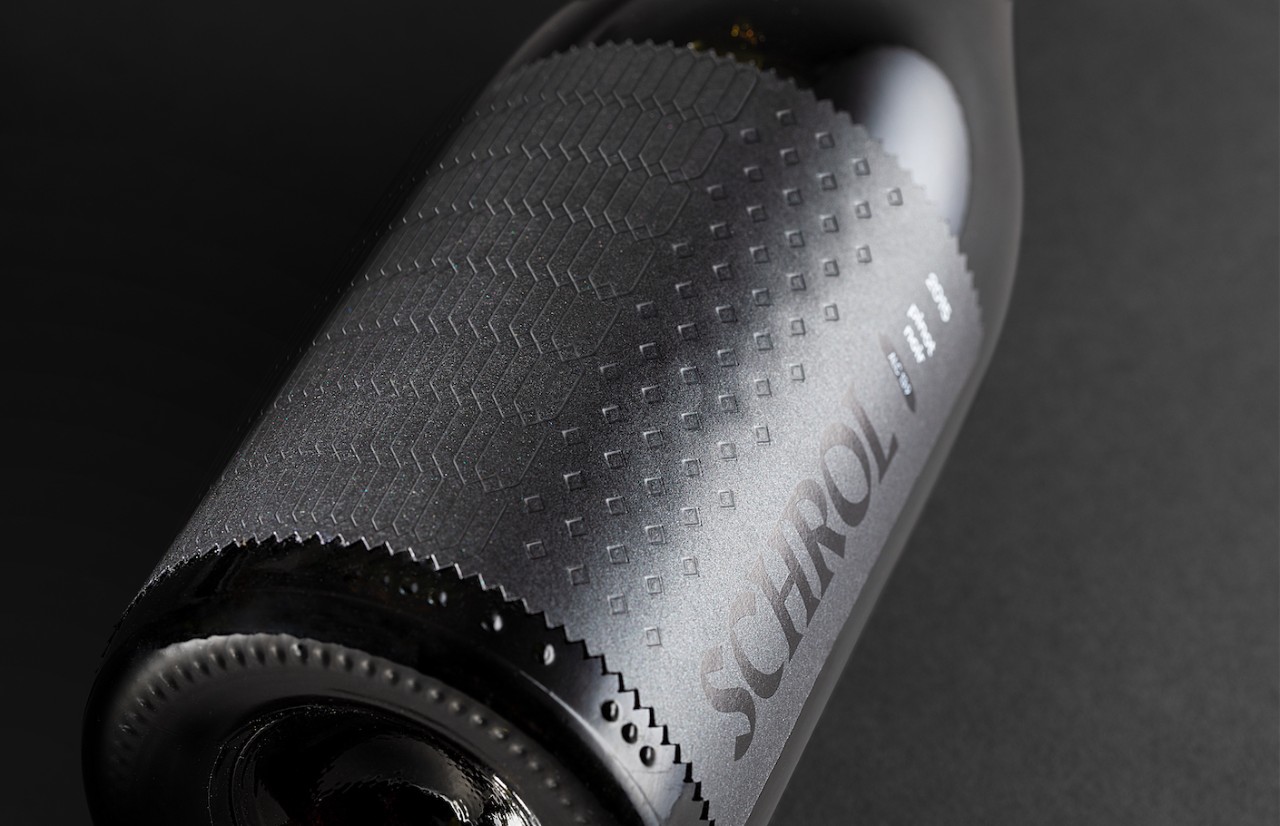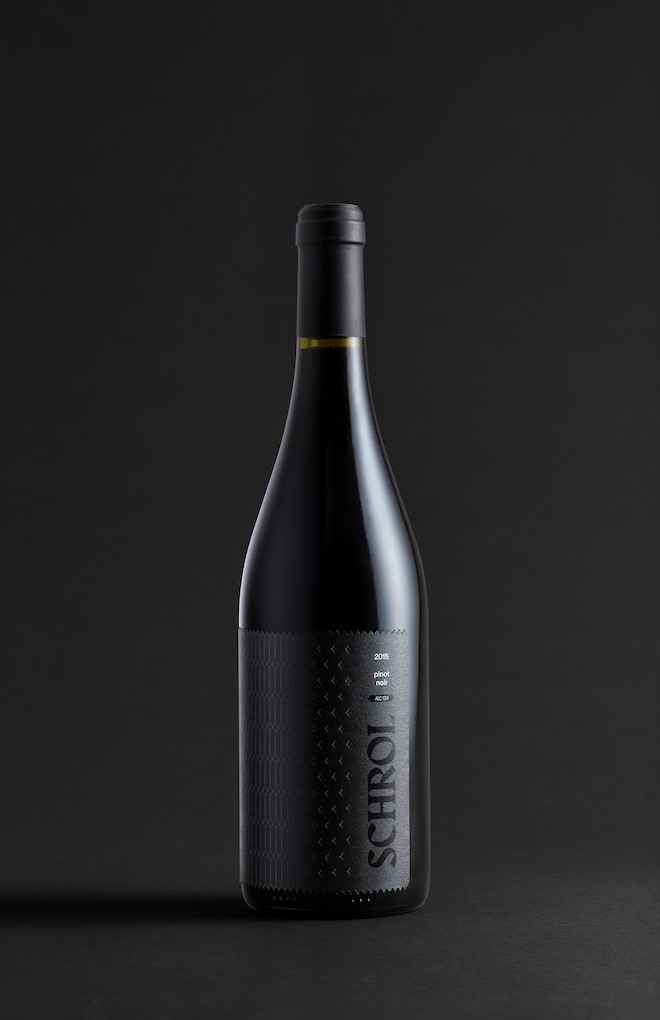Technical Guide to Label Embossing
In wine and spirits label design, embossing is a commonly used finishing technique. According to Avery Dennison Technical Leader of Specialty Products Tony Zalba, “Adding a three-dimensional and tactile element to the design can increase the premiumization of the label. When used to enhance pressure sensitive labels, embossing adds to the dimension and depth of a label.”
For designers interested in utilizing embossing without jeopardizing the integrity of the label application, it’s important to understand the technical process of embossing and how to overcome some of the common printing challenges.
Read on to learn about the technical aspects of embossing and see examples of label designs featuring embossing.

The basics of embossing and debossing
Embossing is a finishing process that lifts the design or image from the surface of the label, usually by means of coupling male and female dies. Specifically, the female die is a low relief image, while the male die is constituted to press the paper against the female engraved die. The finished process is a design lifted from the surface of the label.
Juxtaposed, is the finishing process of debossing. The same process is used in debossing, except that the order of dies is flipped so that the finished process is a design pressed into the surface of the label, leaving a low relief image behind.
Although ink is not used in this process, the web may be pre-printed. When embossing is done in non-printed areas, it’s called “blind embossing.” If done in an image or relief type, it’s called “embossing in register.”
Embossing and debossing in action
Both processes were used in the design for Ekapa, part of the Avery Dennison Inspired by Diversity inspiration envelope designed by Smith Lumen and Rotas Italia.

On the label, the zebra stripes are embossed with hot foil and braille varnish, while the hoofprints of the zebra are debossed with hot foil. The finished effect is a zebra that appears to stand out, and hoofprints that feel imprinted on the label.
Challenges of embossing and debossing in wine and spirits labels
Wine and spirits labels are pressure sensitive, meaning pressure is applied during application to seal the bond between the label adhesive and the form—the bottle. When embossing and debossing are used on pressure sensitive labels, a pocket of air is created between the label adhesive and the bottle.


This tiny pocket of air can wreak havoc on the finished product if not considered during the label design, especially in humid environments like refrigerators or ice buckets. To ensure the adhesive stays adhered to the vessel, plan to keep a 5mm flat edge around the edge of the label. “A flat outer edge around the entire label helps to keep moisture out of those inner air pockets and keeps the label from peeling up around the edges in humid or ice bucket conditions,” says Tony.
Five tips to minimize adhesive disruption
Keep at least 5mm without relief at the label’s edge.
Maximize the area between one relief and another.
When designing the label, consider how the consumer will treat the bottle (Will the product be refrigerated? In an ice bucket?) and use embossing accordingly.
If you’re not sure how the embossing or debossing will affect the label’s adhesive, reach out to the team at Avery Dennison.
Consult with your label converter to ensure the best embossing and debossing performance for your product.
To see more embossing and debossing in design, check out our Gouveia Brasil showcase, featuring Fasson® Silver Foil Embossed facestock—a laminated aluminum material with high shine.



